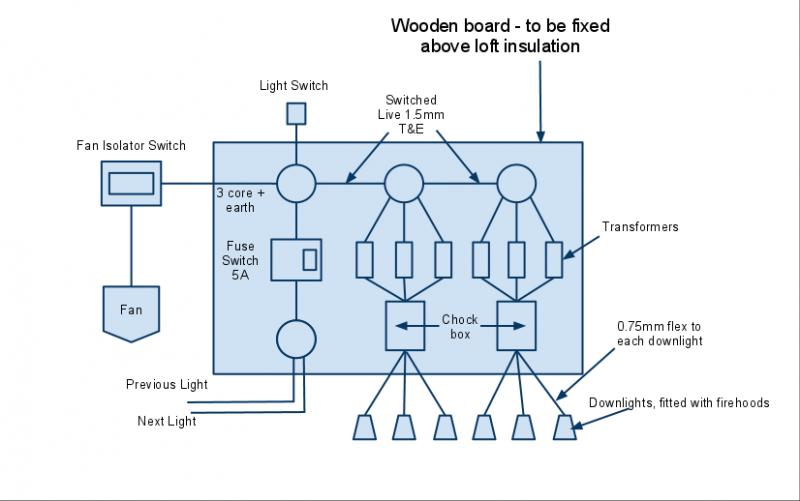I am installing extra low voltage (12v) halogen down-lighting in my bathroom please can you advise if the following setup is ok. Essentially, is it safe to use the switched 1.5mm T+E live to supply 6 transformers as shown in the following diagram:
would I be right in thinking that if 50W bulbs were used (I intend to use 35W bulbs) then the max load on the Switched live cable would be 300W/240V = 1.25A Max load?
would I be right in thinking that if 50W bulbs were used (I intend to use 35W bulbs) then the max load on the Switched live cable would be 300W/240V = 1.25A Max load?



